The BS-WEU series is a compact module with an Ethernet and USB interface. In addition, you can integrate and control this module into your PC network via WiFi.
Several different module variants possible
- with 16/32/64/96/128 digital outputs
Optional extensions
- CAN and serial interface (see accessories)
- A/D current mode (see accessories)
- Ethernet interface 10/100 Mbit with electrical isolation
- Connection via WiFi possible
- WPS function
- Open Ethernet protocol
- USB 2.0 interface up to 480 Mbit
- Digital outputs: 1A, 2A or 3A
- Timeout protection function (configurable via software)
- Robust aluminium housing (suitable for top hat rail mounting)
WEU Modules
WEU Modules (WEU= WiFi, Ethernet, USB) can be connected to the PC network via Ethernet or USB interface, but also via WiFi. For a more user-friendly connection setup via WiFi, the module can also be connected to the router via WPS function.

Relay 1A
With the option “Relay outputs (1A)” reed relays with normally open (NO) function are used. They are suitable for smaller switching capacities of up to 1A and have a service life of well over 100 million switching cycles. The electrical isolation between input and output circuit is up to 1.5kV.
Relay 3A
With the option “Relay outputs (3A)” power relays with normally open (NO) function are used. They are suitable for switching capacities of up to 3A and have a service life of up to 10 million switching cycles. The electrical isolation between input and output circuit is up to 3kV.
MOSFET 2A
With the option “Mosfet outputs (2A)” P-Ch MOSFETs are used. They are suitable for switching capacities up to 2A DC and are practically wear-free.

Fail-safe mode
The fail-safe mode is a safety function in which the DEDITEC module switches to a previously configured, safe switching state in the event of a connection failure.
This is intended to prevent connected installations or systems from continuing to run in an uncontrolled manner.
Three switching states can be defined for each digital output: a) Switched off, b) Switched on or c) Unchanged.
The fail-safe circuit is triggered by a timeout protection function. If the control unit no longer receives any commands from the control PC within a previously defined period of time, the timeout function comes into effect. The cause of a timeout can be a loss of connection between the control PC and the DEDITEC control system or failure of the control PC.
Timeout modes
Three timeout modes are available:
A) “Normal mode” is valid once and must be reactivated manually by software command after each timeout event. The customer application still has access to all controller outputs.
B) In “Auto reactivate mode”, the timeout function is automatically reactivated after communication with the control PC has been re-established. The customer application still has access to all outputs of the control unit.
C) The “Secure outputs mode” blocks access to the outputs after the timeout event. Unlocking can only be carried out by software command. This is an important safety aspect

LEDs
Each digital input and output has a separate LED that lights up when the signal state is active. Furthermore, the status of the operating voltage, the communication with the interface, error events or the occurrence of a timeout can be displayed.

Connectors
A screwless system from the manufacturer WAGO Kontakttechnik is used as the connector. The 1-wire female connectors are 100% protected against mismating and have an eject and locking mechanism. All conductor types up to 1.5mm² can be connected.

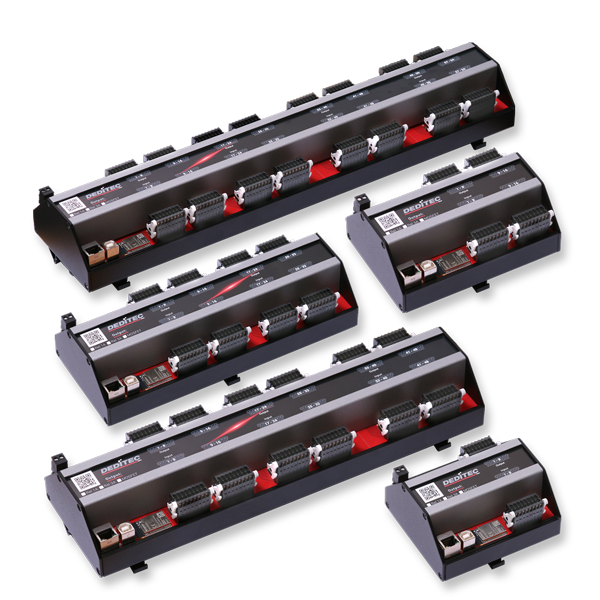
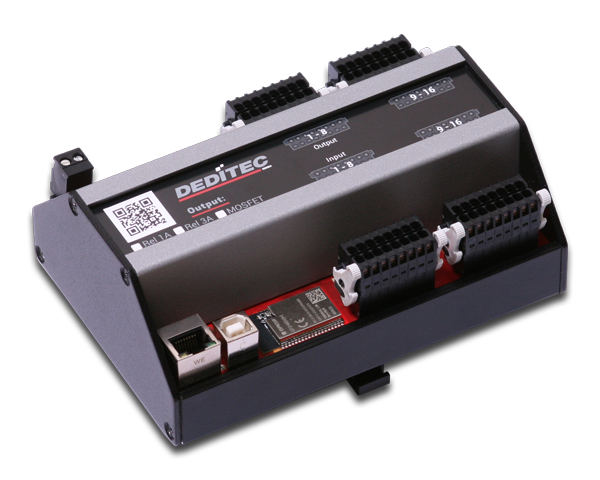


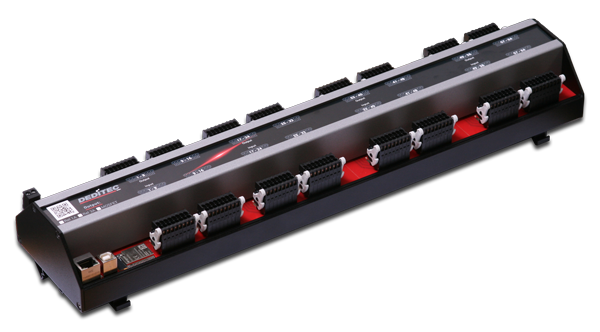































































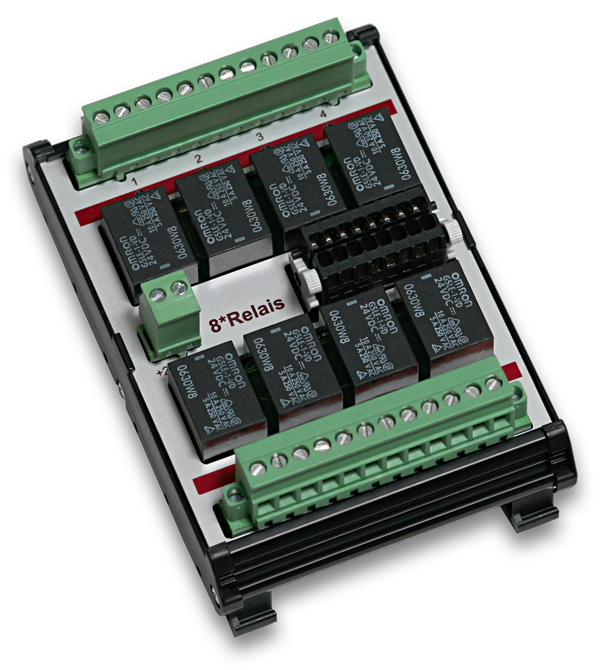


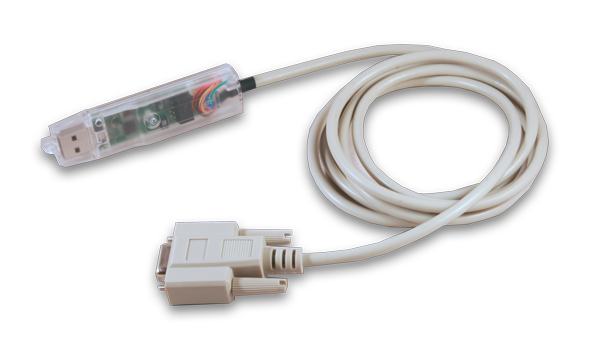










Reviews
There are no reviews yet.